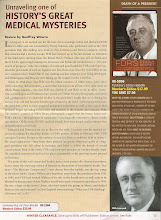Over and over, we find instances of how the written word changed or redefined a historical event. Perhaps the most quoted example, the epitome of Yellow Journalism, the “I’ll furnish the war” telegrams between William Randolph Hearst and Frederick Remington, are themselves open to dispute by W. Joseph Campbell. In his Summer 2000 article in Journalism and Mass Communication Quarterly, Campbell presents a well-documented and convincing argument that the communications, as reported by the sole source of the anecdote, James Creelman, were never sent.
It is undisputable is that the pen has had a remarkable and long-standing influence on the way history is perceived. No better example is the legacy of Paul Revere as defined by Henry Wadsworth Longfellow, in his epic poem, “Paul Revere’s Ride” in the January 1861 issue of the venerable Atlantic Monthly. Prior to the poem, Revere was best remembered as a silversmith and engraver. After 1861, he rose to the iconic status he enjoys today as one of the major heroes of the American Revolution. Longfellow had the specific intention of creating a legend and, as the most “revered” poet of the age, his words were exceedingly successful to that end.
Over the years, historians have recognized that Longfellow’s account was, in great part, historical fiction and Revere’s role in the events of 1775 role have been taken in a more realistic perspective.
Intentional deceptions often take time to be realized and accepted and this is the case that I have been persistently making about the 1970 paper in Annals of Internal Medicine by Doctor Howard Gerald Bruenn entitled “Clinical Notes on the Illness and Death of President Franklin D. Roosevelt. “ Bruenn wrote that paper with very much the same intent as Longfellow- to redefine how the world thought about his mentor and patient. He had a great teacher. “The Juggler” Roosevelt practiced deception as religion. His masterful manipulation of the press projected a lasting and powerful impression on the vast majority of the American people of an image that often did not exist. Yet, if it was not reported, it virtually never happened.
The intentions of Bruenn’s 1970 paper are laid out in the accompanying editorial . “We are given, by Dr. Bruenn, the picture of a great and gallant man, fatigued by the burdens of his office and by his hypertension and reduced cardiac reserve, yet quite able to exercise his judgment and to use the fruits of his unique knowledge and experience in guiding the war effort.”
Twenty-five years after Roosevelt’s death, Bruenn’s paper set the standard for every subsequent historical account of Roosevelt’s life. The myths he perpetrated, the twentieth century equivalent of Longfellow’s “one if by land and two if by sea” remain, for the most part, unscathed.
Roosevelt didn’t care about his health and was never informed of his diagnosis? He remained mentally clear until the moment he died? The presidential physicians were incompetent and made false statements to cover their own shortcomings? All unadulterated poppycock!
If Longfellow had wrote it might have read this way:
Read on my children and you shall see
Of the health and the greatness of Franklin D.
His heart was sick, but his mind was clear
Free to inspire a freedom from fear
He led the nation through depression and war
With a pressure of blood that continued to soar.
His docs kept him going the best they could
Though they would not tell him that all was not good.
He lost forty pounds, his doctors aghast
“I like my flat tummy” he said when they asked
There were no strokes. There was no cancer
A bad circulation was the only answer.
He led us with vigor till the day he died
Out of the blue in April forty-five.
Subscribe to:
Post Comments (Atom)





It is useful and get the full of information here student making a best websites and that full of information here. how many pints of blood in the human body
ReplyDelete